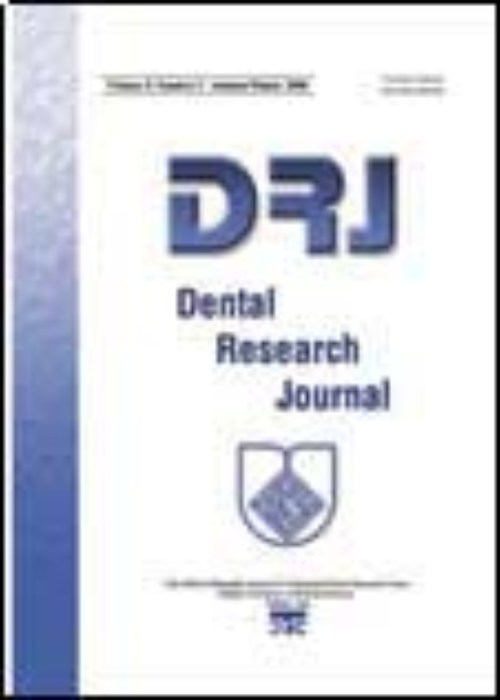Radicular anatomy of permanent mandibular second molars in an Iranian population: A preliminary study
Author(s):
Abstract:
Background
Root morphology is of utmost importance to endodontic sciences. Since there are a few studies on the morphology of mandibular second molars roots, and some anatomical variables are not evaluated before, the aim of this study was to investigate thoroughly radicular anatomy of this tooth.Materials And Methods
This ex vivo study was performed on 150 intact mandibular second molars. After access cavity preparation and ensuring canal patency, Indian ink was injected into root canals from the orifices. The teeth became transparent using methyl salicylate storage. Then, they were inspected by an endodontist under a ×10 stereomicroscope regarding numerous root morphological variables. Data were analyzed using chi‑square test and analysis of variance (α= 0.05). Results
About 86.7% of teeth had two roots and 13.3% were single‑rooted (P = 0.0001), of which, 50% were C‑shaped (6.7% of all teeth, P = 0.0001). 86.7% of mesial roots were double canalled, whereas 75.3% of distal roots were single canalled (P = 0.0001). 71.45% and 95.3% of the mesial and distal roots had one apical foramen, respectively (P = 0.0001). Apical foramens were mostly central followed by lingual in most cases. Distances between apical foramen and apical constriction ranged between 0.27 and 0.40 mm (P = 0.0545). Distances between apical foramen and root apices ranged between 0.30 and 0.47 mm (P = 0.0001). Vertucci classifications of mesial canals were Type II in 62.6% and Type IV in 37.4%. 86.2% of single‑canal distal roots were Type I. 66.7% of double‑canal distal roots were Type II and 33.3% were Type IV (P = 0.0001). The mean root lengths from cervical to apex of mesial, distal, and single roots were 14.02 ± 0.85 (95% confidence interval [CI] = 13.8714.17), 13.35 ± 0.91 (95% CI = 13.1913.50), and 14.25 ± 0.72 mm (95% CI = 13.9114.58), respectively. The extents of canal curvatures varied between 20° and 31° buccolingually (P = 0.0000), and between 19° and 27° mesiodistally (P = 0.0000).Conclusion
There was a considerable rate of eccentric apical foramen in mandibular second molars.Keywords:
Anatomy , apical , constriction , apical foramen mandibular , second , molar , root , curvature
Language:
English
Published:
Dental Research Journal, Volume:13 Issue: 4, Jul 2016
Page:
362
magiran.com/p1567070
دانلود و مطالعه متن این مقاله با یکی از روشهای زیر امکان پذیر است:
اشتراک شخصی
با عضویت و پرداخت آنلاین حق اشتراک یکساله به مبلغ 1,390,000ريال میتوانید 70 عنوان مطلب دانلود کنید!
اشتراک سازمانی
به کتابخانه دانشگاه یا محل کار خود پیشنهاد کنید تا اشتراک سازمانی این پایگاه را برای دسترسی نامحدود همه کاربران به متن مطالب تهیه نمایند!
توجه!
- حق عضویت دریافتی صرف حمایت از نشریات عضو و نگهداری، تکمیل و توسعه مگیران میشود.
- پرداخت حق اشتراک و دانلود مقالات اجازه بازنشر آن در سایر رسانههای چاپی و دیجیتال را به کاربر نمیدهد.
In order to view content subscription is required
Personal subscription
Subscribe magiran.com for 70 € euros via PayPal and download 70 articles during a year.
Organization subscription
Please contact us to subscribe your university or library for unlimited access!


